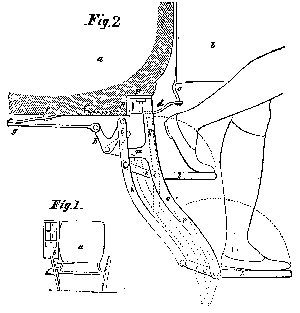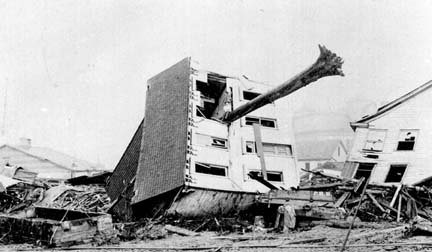

Hugh Blackmer, Science Librarian
Ideas for courses often have diverse purposes and multiple origins, but this one may set a record. It began when I was moving books into the new Science Library and found a nearly complete run of the Journal of the Franklin Institute, starting in 1826. What a shame, I thought, that nobody uses this resource, one of the first American journals of popular science and other useful arts. Other 19th century gems came to light, fragments of a history of inquiry and ingenuity which built the nation, and I started to explore the library's 19th century resources and consider how they might be made more accessible, how the library's resources might be fitted into courses, and how students and faculty could be encouraged to explore and discover these riches. It's partly a matter of making pointers to resources, but it's also necessary to figure out effective ways to entice people to follow the pointers and do the exploring.
At more or less the same time I began to work on a proposal for GIS capability for the library, aimed at raising awareness of the utility of spatial information in a broad range of disciplines. The GIS scheme (funded by a small Mellon grant from Associated Colleges of the South) is organized around development of a regional map database and internet map server, centering on the area of western central Virginia in which Washington & Lee is located. The intention is to gather and interrelate historical and contemporary maps of this region, including geological, biological, archaeological, genealogical and local history data, and ArcView's hyperlink capabilities make it practical to connect spatial data with texts and images.
Another campus connection led me to a nascent project on the historical iron industry of this part of Virginia, combining the interests, data sources and talents of a group geologists, chemists, metalsmiths, archaeologists, foresters and historians. Clearly both 19th century library resources and 20th century GIS capabilities apply to this initiative, and provide an opportunity for me, as an anthropologist and Science Librarian, to combine my own long-run interests in technological history and regional studies with my more recent web-based work in information access.
In the process of exploring means to encourage cooperation between computing services, media center, the library and teaching faculty, I had a discussion with John Blackburn, director of the library's media center, about two outstanding and interlinked problems: ways to use new technologies to inspire students to take control of their own educations, and to get faculty interested in using the new possibilities in their teaching. We agreed that student commitment must rest on a sense of personal worth in what they do, and that any uses of new technology in the classroom need to have the practical difficulties straightened out before any but the most adventurous faculty are likely to adopt them: grand schemes have to be seen to be effective, and the effort to learn new tools has to have a clear payoff.
Out of this came a plan to collaborate on a seminar course in the history of technology, focused in the American experience, for which the output form and a primary medium for student participation would be web pages, instead of conventional papers. There are several reasons for this approach:
A discussion with Alan Howard of the University of Virginia American Studies Program convinced us that students do in fact respond positively to the challenge of web publishing, and that the technical hurdles are surmountable. On the technical side, cooperation from University Computing and the library has made a computer training classroom available for the multimedia portion of the course, and the media center director will assist with teaching the necessary skills. The idea is that techniques developed for this course (and difficulties overcome) should provide a model for other faculty, and a technical basis for extension of the overall design to other courses.
History of Technology is a quintessentially interdisciplinary subject, connecting technical and scientific with social and cultural, and is much concerned with the consequences of technical innovation. Consequently, the curricular location for an experimental course in this area isn't obvious. As Science Librarian I have the advantage of freedom from disciplinary strictures and an identity that is not confined to any single department. Washington & Lee's University Scholars Program offers seminars to small groups of our best students, and has a history of cross-disciplinary courses. The course description sketches the flexibility we intend:
Technology deals with materials, processes, energy transformations, mechanisms, the taming of physical forces and the domestication of biological systems. As people adopt new machines and techniques, their relationships to one another and to their surroundings change. This course focuses upon American technological frontiers and examines the technical background and social and cultural implications of a broad range of evolving technologies. A cross-disciplinary seminar with a media lab component, the course will include selected readings, library exploration, and class and World Wide Web presentations. 3 credits.Further detail from the course proposal makes it clear that we intend the course to be open-ended, and that its success relies upon the reputation of University Scholars as self-starters:
Seminar meetings could be organized around specific technology (viz: basic tools, prime movers, energy, textiles, information, steam, rail, the American System of manufacturing, efficiency, precision, etc.), or by materials and energy (viz: wood, wind, water, iron/steel, steam, ceramics, coal, oil, electricity, etc.), or by persons (mechanicians, inventors, popularizers) or processes (settlement, diffusion of innovations, urbanization, etc.) --or by judicious selection of combinations of these topics, building upon examples which are especially well represented in W&L library holdings.Students will choose one or more of the following for their course projects: a technology, a decade or an era, a frontier, a geographic region, a person (author, inventor, artist, etc.), or an industry. They will use W&L library resources as the primary basis for exploring the effects and consequences of technological change in the time period, area, person or industry selected, and the premium is really on exploration. Starting places (an illustration, a text, a specific event) matter less than the connections that explorers make and the adventures they have as they pursue implications. An image like either of these could lead in many directions:


on the left: from a description of Corbett's Patent Carriage Step from the 1828 Journal of the Franklin Institute ("...the invention will be found a great convenience to medical men, and stage coach proprietors [who]... do not employ a footman to open and shut the door or steps"); on the right, an image from the Johnstown Flood of 1889.
The general metaphor of the frontier appeals to us as an organizing theme, both for its inclusiveness and its implication of evolutionary development. While spatial frontiers are the most obvious example, we also mean to raise other issues as past and present technological frontiers and arenas of social and cultural implication --infectious diseases, miniaturization, domestic architecture, free verse, fertility, precision, deafness, and so on.
A number of faculty have expressed interest in sitting in on the course, probably as much for its novel subject matter as for the multimedia approach. We anticipate that we as instructors will learn a great deal about the practicalities of teaching the integration of multimedia resources. Most important, we intend and hope that creative use of the web will enhance learning, and give students a taste for research and writing for an audience.